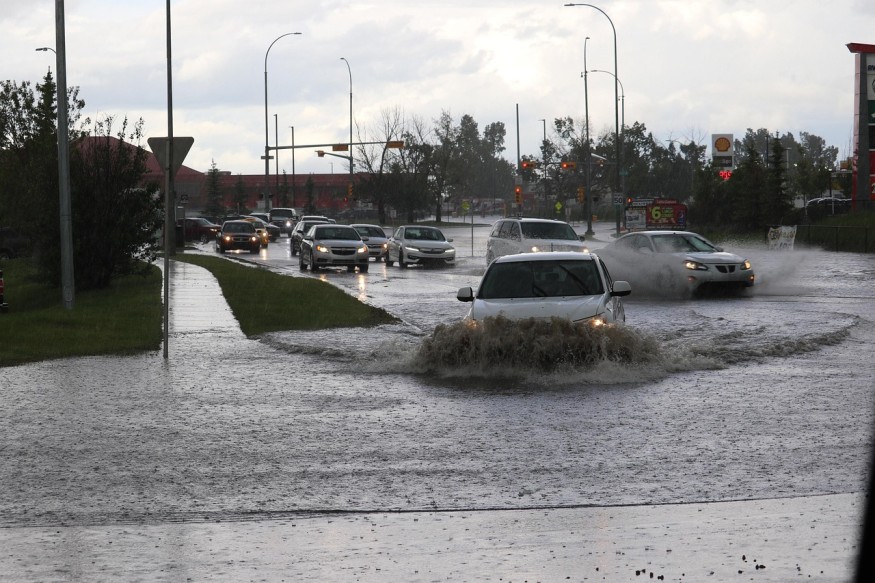Flooding is becoming an ever-greater risk. Over the years, our climate has been changing, which has led to an increase in the frequency and intensity of heavy rainfall and storm surges. Warmer air holds more moisture, which means storms can unload larger volumes of water in short bursts. Coastal areas are facing higher sea levels, and inland regions are dealing with drainage systems that were never designed to handle the volume of water they now receive.
This has led to businesses and consumers having to find ways to limit flooding, as even a single event can cause major financial loss. For businesses, flooding can damage stock, disrupt operations, and force closures that take weeks to recover from. For homeowners, the cost of repairs, insurance issues, and the emotional impact can be overwhelming.
Today, solutions offered by professionals like Seton are available to help companies mitigate the risks to both their operations and their assets posed by the regular threat of flooding. To help give you some insights, below we have put together a guide on the latest innovations to limit flooding. Keep on reading to discover new solutions to limit flooding.
Five Innovations to Limit Flooding
Smart Drainage and Sensor Technology
Modern drainage systems are becoming far more intelligent. Sensors placed inside drains, gullies, and waterways can monitor water levels in real time. These systems send alerts before blockages or overflow points become dangerous, which gives businesses and consumers the chance to clear or redirect water early.
Traditional methods require a lot of guesswork, but with smart drainage, you can remove this guesswork and come up with solutions quickly, before something becomes more serious.
Advanced Forecasting and AI Modelling
Technology has developed so much over the years, with new pieces of tech being released weekly. One piece of tech that is at the forefront of people's minds at the moment is AI, and by using AI, you can help limit flooding. AI can analyse huge amounts of data far faster than humans can. It studies rainfall patterns, river levels, soil saturation, and previous flood events to predict where flooding is most likely to happen. There are many dangers of climate change to be aware of.
With this information, you can use the tech to help you be more prepared and put protocols in place before something serious is predicted to happen. It gives you the chance to act early, strengthen your defences, and reduce the impact of any potential flooding.
Rain Gardens and Green Infrastructure
Green infrastructure absorbs and manages water using plants and soil. Rain gardens, green roofs, planted basins, and natural swales help capture stormwater and reduce surface flooding. They not only limit water build-up but also improve air quality and add visual appeal to business sites and residential areas. More towns and cities are integrating these solutions to handle modern rainfall levels, as it's great for the environment. These can also be fairly affordable, meaning you don't have to spend a lot to help protect your property.
Permeable Surfaces
Hard surfaces like concrete and tarmac push rainwater straight into drains, which can overwhelm the system quickly. Permeable surfaces work differently. They allow water to soak through the ground rather than rushing across it. Businesses and homeowners are now using permeable paving for car parks, paths, and outdoor areas to reduce run-off and lower the risk of flash flooding. This simple change helps manage water far more naturally, plus upgrading to a permeable surface isn't as costly as you would imagine. What's best to do is get a quote and see if the costs outweigh the cons if you are subject to flooding. When getting a quote, you can also ask more about permeable surfaces, as well as understand more about the benefits they offer and the installation process. Before opting for any company, make sure you read their reviews first. TrustPilot is a great place to look for this.
Modular Flood Barriers and Property-Level Defences
Portable flood barriers have become an essential innovation for businesses that need flexible protection. These systems can be deployed quickly and stored easily when not in use. Alongside this, property-level products like flood gates, door seals, air brick covers, and automated sump pumps give buildings a stronger line of defence. These upgrades help protect stock, equipment, and entrances during sudden surges. When combined with other methods of protection, such as using AI modelling, this can be very effective.
Flooding is becoming a growing risk due to heavier rainfall, rising sea levels, and drainage systems that cannot keep up with today's climate. This puts both businesses and homeowners under pressure to protect their properties and reduce potential losses. Whether you go down the route of modular flood barriers, permeable surfaces, smart drainage, or AI, there are plenty of options to help you prevent damage to your property.
What changes are you planning on making to limit flooding? Which of the above innovations were you previously aware of, and which ones are you most interested in? Is there anything missing in our guide on innovations to limit flooding that you think we should be adding? Let us know in the comment box below. We look forward to hearing from you.
© 2025 ScienceTimes.com All rights reserved. Do not reproduce without permission. The window to the world of Science Times.













